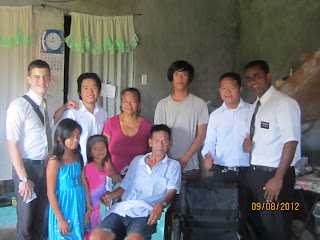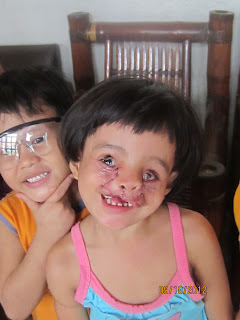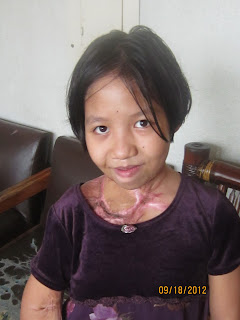Since being in the Tayuman Ward (Taytay Stake) we have had eight requests for walkers and wheelchairs. We get to see the continuing good that these aids provide.
This man has several members of the church in his home. He, his wife, two sons and some granddaughters are members and active. We get Elder McDonald and Elder Raiwalui to help us whenever we can to get them new contacts in the ward. Just a short time ago, we delivered this man a walker because he still had strength in his legs. Now that strength has diminished to a point where we supplied him with a wheelchair. He can no longer speak and has no strength to come to church, but his family's life is helped by making it easier to care for him. He cried as we fit him to the
wheelchair and we joined in the choir. These moments are very tender and the spirit is there to confirm the truth of our Father in Heaven's love for them.
Three months ago, the monsoon rains displaced this sister and she is still in an evacuation center because her home remains flooded. She is there with hundreds waiting for the opportunity to go home. She told me she saw me in the Temple and was excited to see me again. She had been borrowing a wheelchair from a friend, but now she has her own. This gives her the opportunity to go to the Temple whenever she can. The Lord works in mysterious ways his labors to perform. I have never been so sure of that statement.
















































